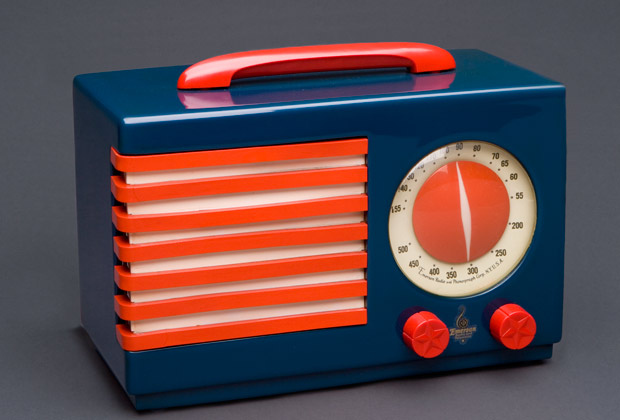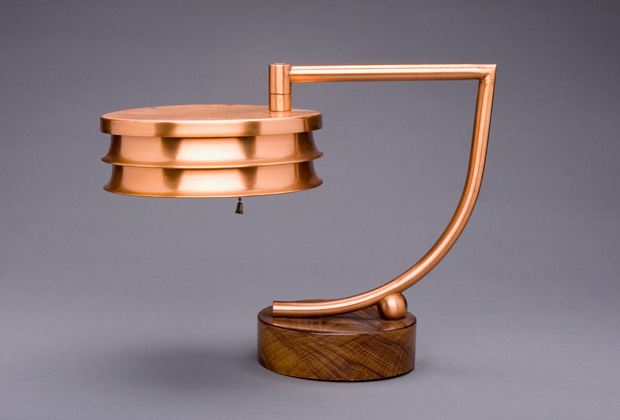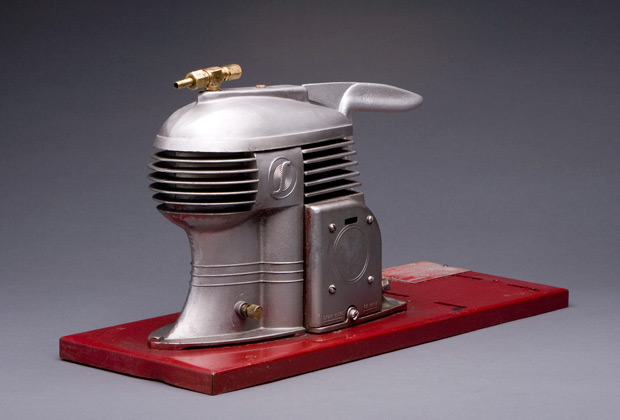George Kravis
Avid design collector compiles contemporary-history objects

Sponsored content:

A consummate collector for more than a decade, George Kravis has cultivated one of the preeminent art collections of industrial design. “I’ve always been interested in anything with a cord, a plug, a battery or a light,” states Kravis. Growing up in a household full of Russell Wright dinnerware and Tommi Parzinge furniture, Kravis’ appreciation for design developed at an early age. The purchase of an RCA Victor model record player in 1949 launched the beginning of Kravis’ collection and incited a lifelong fascination with the stylish allure of everyday objects.

Kravis forged a career in broadcasting from the ground up, demonstrating a tenacity and sense of determination evident in his collection. In 1962, he became one of the youngest individuals to own a jazz radio show and later went on to acquire several radio stations. The communications mogul turned radio connoisseur began to amass a selection of vintage radios to form the cornerstone of his collection. “It’s pretty representative today of what happened during the Golden Age of radio,” says Kravis of the collection, which boasts models such as the boldly iconic Patriot Radio and the shapely Air King Skyscraper radio of the 1940s.

The thousands of objects Kravis has gathered are mined as much for their value as they are for their personal impressions. “Sometimes I’m trying to fill a hole in the collection,” he explains. “Sometimes, I just see something and it jumps out at me. It speaks to me. I know it’s the right thing.” Culling from auction houses and eBay, Kravis affectionately details a list of his pieces with infectious enthusiasm: “I have sleds, power tools, air compressors, blenders, telephones and typewriters.”
Kravis’ collection is predominantly a study of the Streamline Moderne design craze that swept Depression-era America in the 1930s—it was a movement based on endowing basic, domestic objects with a sleek, aerodynamic style that belied an optimistic interpretation of the future. Both aesthetically and historically significant, Kravis’ collection includes nine of the 12 objects featured as apart of the retrospective stamp series entitled “Pioneers of American Design,” which debuted at the Copper-Hewitt Museum in 2011.

In 2007, Kravis found a kindred spirit in David Hanks, curator for the comprehensive exhibition, “American Streamlined Design: The World of Tomorrow” who now serves as an independent advisor to Kravis. Impressed by the caliber of the show, Kravis contacted the Philbrook Museum to host the exhibition which featured 180 objects from such design luminaries as Norman Bel Geddes and Henry Dreyfuss.
As a Tulsa, Oklahoma native Kravis created a longstanding and integral connection to the Philbrook Museum, serving as a board member since the 1960s. Kravis reflects, “It has been an important part of our social life and our art life here in the community.” In 2008, Kravis gifted a portion of his collection to the Philbrook, and it is now on display at a satellite building pending relocation to a new wing (opening in 2012) designed by the renowned architect, Richard Gluckman. An advocate of sharing his collection to educate and inspire students, Kravis states, “I think it will develop a whole new audience.”

Kravis employs an expert eye for the design hallmarks of the past while also looking forward as an Apple product enthusiast and collector of the whimsically elegant products by contemporary design firm, Black + Blum. He underscores the importance of creating products that are “appealing and functional,” applauding consumer giant Target and museum shops for making design more obtainable. To predict the standing of good design, Kravis says, “Some things, take a wait and see. It’s like listening to a new song. You have to listen to it for awhile to see if you really like it.”
Nine objects from the George Kravis collection will be on display as a continuation of the traveling “Stamps of Approval” exhibition, opening at the Smithsonian Castle in Washington, D.C. from 15 November-29 April 2012.
This story is part of an editorial series sponsored and inspired by Le Meridien.
New Perspectives explores fresh ideas and distinct points of view in global art and culture.












